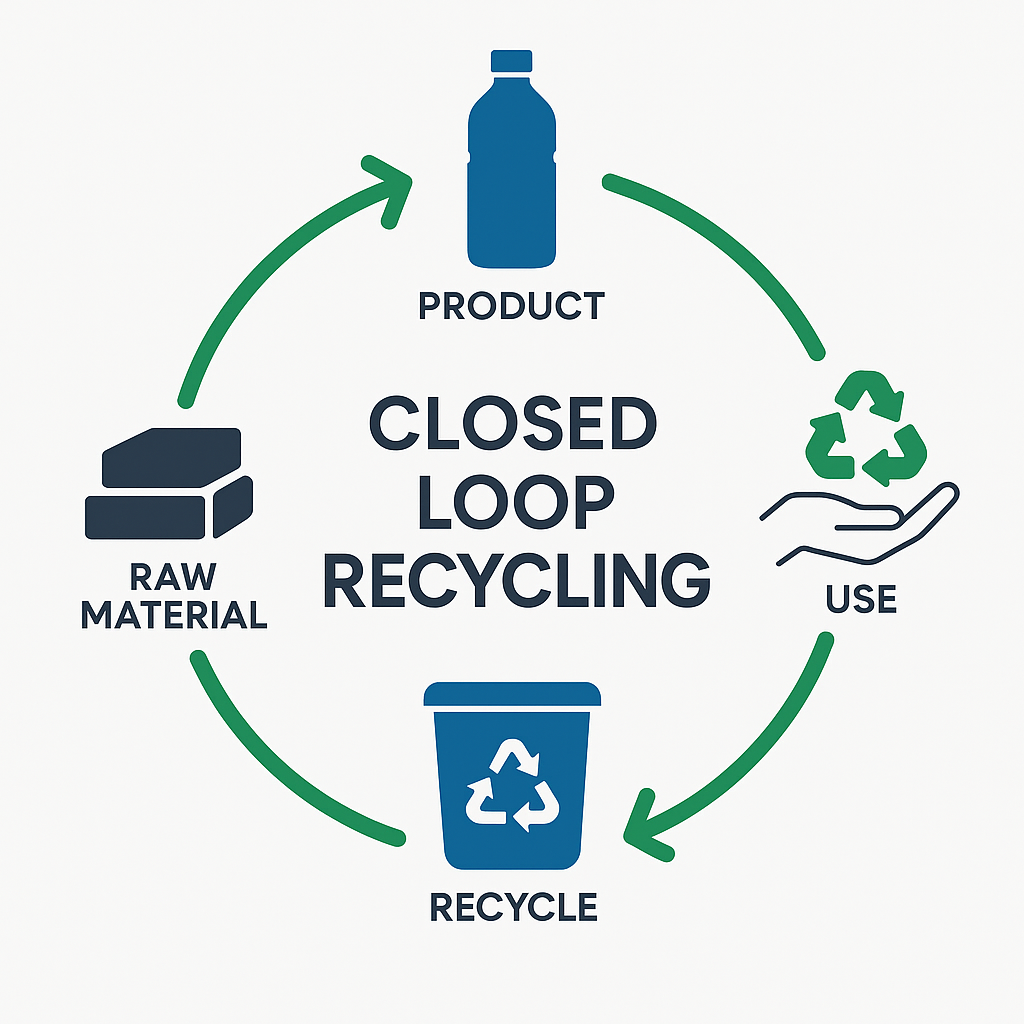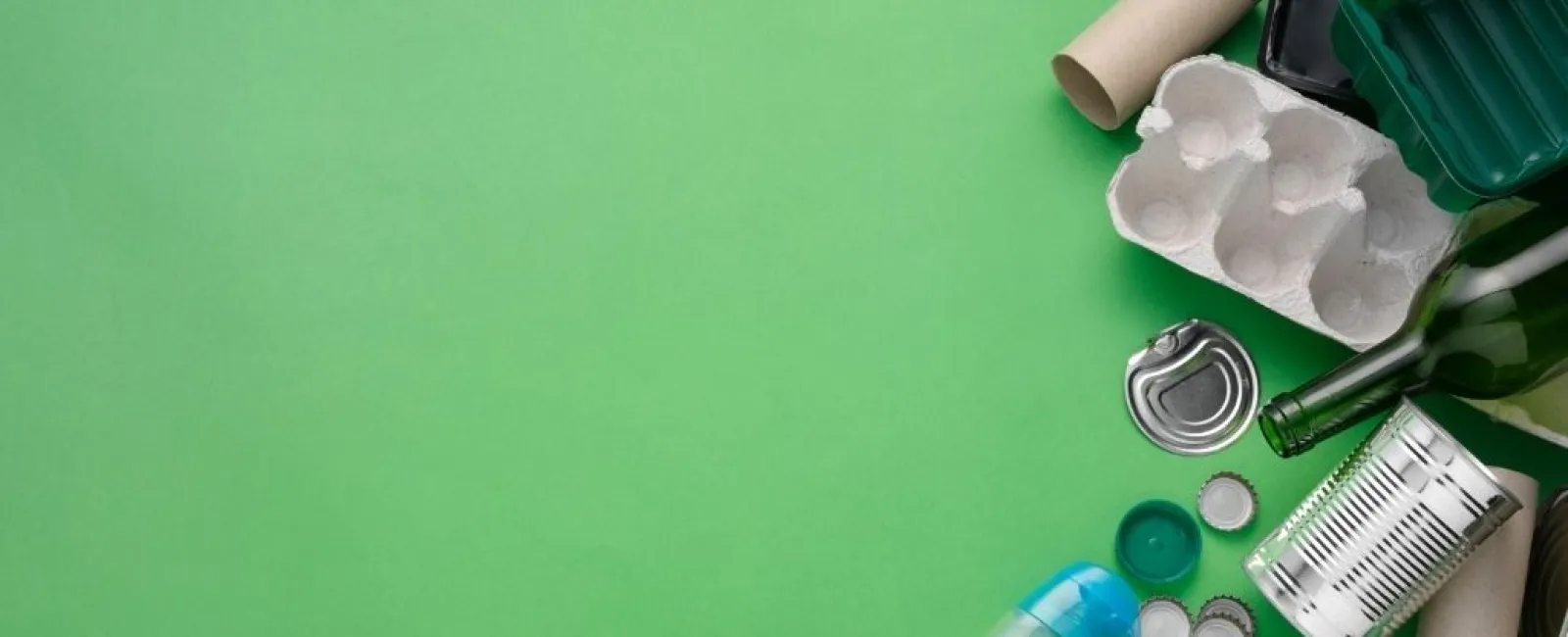Closed loop recycling is a process where materials are reused to make the same product over and over again without losing quality. It's one of the most efficient ways to reduce waste, cut costs, and fight resource depletion. Rather than being thrown away or turned into lower-grade materials, items in a closed loop system are recycled back into their original form, like turning used aluminum cans into new ones.
This concept is important because it helps preserve natural resources and keeps materials in use rather than sending them to landfills. In an age where companies are under pressure to be more sustainable, closed loop production is a way to minimize environmental impact while improving operational efficiency.
In this article, we'll explain how closed loop recycling works, how it compares to other systems, and why it matters for industries like packaging, distribution, and manufacturing. We'll also look at real-world examples and ways your facility can start closing the loop with the right equipment and process in place.
Closed Loop Recycling Explained
A closed loop system is one where a product is recycled into the same type of product, with no loss in quality or performance. This cycle can continue indefinitely as long as the material remains reusable. It's the opposite of open loop or "downcycling," where materials are turned into lower-grade products.
Here's a simple way to think about it:
-
Closed loop recycling: Aluminum can → melted → new aluminum can
-
Open loop recycling: Plastic water bottle → shredded → carpet fiber
The goal of a closed loop system is to prevent waste entirely by keeping materials within the production cycle, reducing the need for new raw materials, and slowing down resource depletion. When done well, it lowers energy use and greenhouse gas emissions too.
Why Is Closed Loop Recycling Useful?
The biggest benefit of closed loop recycling is that it helps conserve natural resources. When materials like glass, aluminum, and some plastics are reused over and over, fewer raw materials need to be extracted from the earth. This is a critical strategy in addressing what is resource depletion, which refers to the exhaustion of finite natural materials.
Beyond environmental benefits, closed loop recycling can also:
-
Lower manufacturing costs in the long run
-
Reduce dependence on raw material markets
-
Improve brand reputation and compliance
-
Make recycling processes more predictable and efficient
For businesses handling large volumes of recyclable materials, especially in industries like packaging and distribution, closed loop strategies can improve operational performance and reduce waste hauling costs. Crigler helps companies implement recycling solutions for packaging & distribution facilities to support these efforts.

Common Examples of Closed Loop Systems
Some materials are naturally better suited for closed loop recycling than others. Here are a few of the most common examples of closed loop systems:
1. Aluminum Cans
Aluminum is one of the easiest and most valuable materials to recycle in a closed loop. It doesn't lose quality through the recycling process, which means it can be reused indefinitely. In fact, over 70% of aluminum ever produced is still in use today.
2. Glass Bottles and Jars
Like aluminum, glass can be recycled over and over without degrading. Recycled glass is often used to make new containers, reducing the need for virgin sand and other materials.
3. Paperboard and Cardboard
Though not infinitely recyclable like glass or aluminum, paper and cardboard can go through several cycles before the fibers break down too much. Clean cardboard, especially from commercial packaging, is ideal for a semi-closed loop system.
4. PET Plastic (in limited cases)
Some companies are starting to develop technologies that allow PET plastic bottles to be recycled into new bottles. This process is more complex and expensive, but it shows promise in closing the loop on single-use plastic packaging.
5. Electronic Components
Innovative companies are recovering rare materials from electronics like hard drives and reusing them in new products. With proper sorting equipment like shredders, businesses can recover valuable materials from their e-waste stream.
Closed Loop vs. Open Loop Recycling
While closed loop recycling focuses on maintaining the material's original use, open loop recycling involves turning a product into a new, often lower-quality item. This process is more common because it's easier and more flexible, but it doesn't offer the same long-term benefits.
Here's a quick comparison:
| Feature | Closed Loop | Open Loop |
|---|---|---|
| Product Reuse | Same Product | Different product |
| Material Quality | Maintained | Degraded |
| Environmental Impact | Lower | Higher |
| Resource Savings | Higher | Moderate |
| Examples | Aluminum cans & glass bottles | Plastic → textiles, cardboard → insulation |
A closed loop system may be harder to implement, but it offers the greatest potential for sustainability.
How Businesses Can Implement a Closed Loop System
Setting up a closed loop system starts with choosing the right equipment and designing a process that keeps materials clean, sorted, and ready to be reused. Here's how companies can take practical steps toward closing the loop:
1. Identify Recyclable Material Streams
Begin by analyzing the types of waste your facility generates. Materials like clean cardboard, aluminum, and certain plastics are well suited for closed loop recycling and should be separated early in your workflow.
2. Use Industrial Shredders for Material Prep
Recyclable materials often need to be broken down before they can be reused. Shredders are ideal for this step. They reduce items like cardboard, plastics, and packaging foam into smaller pieces, making them easier to handle and more efficient to sort or compact. Shredding also improves volume reduction and cleanliness, which are critical for closed loop systems.
3. Add Conveyor Systems to Streamline Sorting
Once materials are shredded, conveyors can be used to transport recyclables through various stages of your system. Whether you're feeding balers, sorting lines, or compactors, conveyor belts help reduce manual handling and maintain a steady processing flow. Crigler can assist with designing conveyor layouts tailored to your material handling needs.
4. Use Balers to Compact and Prepare Material
After shredding and sorting, balers compress materials like cardboard, PET plastics, or aluminum into dense, uniform bales. These bales are easier to store, transport, and reintroduce into the production cycle. Balers are especially useful in packaging and distribution centers aiming to reuse or resell recyclable waste.
Challenges to Closed Loop Production
While the benefits are clear, there are still a few hurdles to widespread adoption of closed loop production:
-
Contamination: Materials must be clean and sorted properly, which requires training and systems in place.
-
Material Limits: Not all materials can be recycled in a closed loop without losing quality.
-
Cost of Equipment: Upfront costs for compactors, shredders, and system design may be high, but long-term savings often outweigh them.
-
Lack of Infrastructure: In some regions, access to specialized recycling facilities may be limited.
Still, with rising demand for sustainable solutions, more industries are making the investment and committing to circular systems.
Why Closed Loop Recycling Matters Now
As global industries grow and demand for resources increases, resource depletion has become a serious concern. Whether it's metals, oil, or water, we can't rely on an endless supply of raw materials. Closed loop recycling offers a way to stretch what we have further, keeping materials in circulation and out of landfills.
This isn't just about the environment, it's also about creating a more stable, cost-effective supply chain. Companies that make smart investments in waste reduction today will be better positioned to handle regulatory changes and market shifts tomorrow.
Conclusion: What Is Closed Loop Recycling?
To sum it up, closed loop recycling is a system where used products are recycled back into the same products, helping reduce waste and protect valuable resources. It's a key part of sustainable business practices, especially in industries that generate large volumes of recyclable materials. Whether you're in packaging, manufacturing, or logistics, Crigler can help you build the foundation for a more circular operation.
Looking to start or expand a closed loop recycling system?
Reach out to Crigler today to learn how we can help your business turn waste into a long-term resource.
